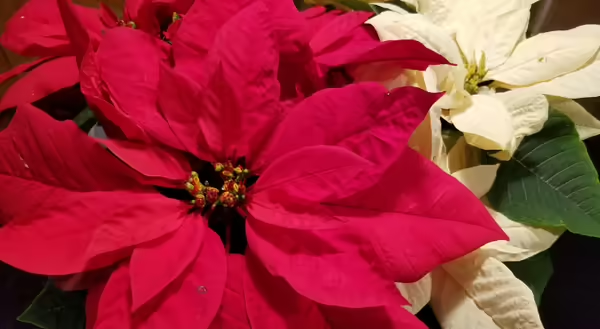
Poinsettias (Euphorbia pulcherrima) are US households' most popular holiday plant. It is estimated that over 30 million poinsettias are sold each year around the holiday season, accounting for about one-quarter of all flowering houseplants sold in the US year-round. That is a staggering statistic, making it the highest-selling potted plant nationwide. It is so interesting to me that a plant that most of us purchase, enjoy for the holiday season and discard when blooms fade can be so widely sold.
What has made this plant so ubiquitous to the holidays? Is it simply the bright red colors contrasted with green foliage? It’s certainly not their overall hardiness that made them so popular. Anyone who has ever taken one home can likely attest to their sensitivity to cold and need for constant watering. In fact, it wasn’t until the 1960’s that plant breeders were able to produce a variety that would bloom for more than a matter of days.
Joel Poinsett
The story of poinsettia’s holiday signature dates back to the 1800’s. President John Quincy Adams appointed the first ambassador to the newly recognized Republic of Mexico in 1825. He chose a congressman from South Carolina named Joel Poinsett, who was an accomplished world traveler and an amateur botanist. As Poinsett fostered our relationship with Mexico, he also explored the natural resources of areas he visited in search of new plant species. On one such excursion in December of 1828, Poinsett found a beautiful flowering shrub along a roadside south of Mexico City. He immediately harvested cuttings from the plant to bring back to his greenhouse in South Carolina.
Poinsett began to study and breed the shrub in his greenhouse, sharing specimens with other horticulturalists, and it soon gained popularity as a holiday plant due its bright red coloration and the timing of its flowering display.
What is a Poinsettia?
Poinsettias are “short-day” flowering plants, responding to the shortened day length leading up to the holidays with a flower display that coincides perfectly. As you might have guessed, the plant was named after Poinsett, as a nod to his early work in breeding and development, and the rest is history.
The plant structures that most of us think of as poinsettia flower petals are technically bracts, which are modified leaves, that display the bright red color. The flower itself, called a cyathium, consists of tiny yellow clustered buds located at the base of the bracts, in the center of the plant structure.
How To Select Poinsettias
When selecting a poinsettia, it is important to pay attention to the maturity of the tiny flowers. If yellow pollen is covering the flower structures, then the plant has reached maturity and will not last nearly as long as a plant with underdeveloped flowers. Poinsettias drop their bracts and leaves soon after flowers shed their pollen. If possible, look for plants with flowers that are green or red-tipped and show no signs of yellow pollen production.
It is also important to take stock of the foliage on the plant. Choose plants with bracts that are fully colored red and do not have green around the edges. Wilted leaves indicate a plant that needs water and poinsettias require fairly consistent soil moisture. If you notice wilting, check the soil in the pot by sticking your finger in to about the first knuckle. If the soil seems moist and there are still signs of wilt, this may be an indication of root rot which is a common condition that shortens the plant’s life. Make sure you select a plant with a balanced and attractive canopy of leaves. Dark green foliage should be evenly distributed all the way down to the soil line.
Poinsettias can offer up to 6 or 8 weeks of attractive foliage with proper care. With some careful selection at the garden center and some TLC at home, you can get the most out of these specular holiday plants.
Main image caption: Poinsettias are the top-selling holiday plant in the US, accounting for nearly one-quarter of all sales of flowering potted plants year-round.
Cover image caption: Poinsettia’s colorful, bright red bracts (modified leaves) are often misidentified as flower petals. In reality, the flower structure consists of a cluster of tiny yellow buds in the middle of the bracts.